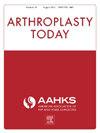择期手术患者服用钠-葡萄糖结合转运蛋白2抑制剂的糖尿病酮症酸中毒及其预防:国际视角
IF 2.1
Q3 ORTHOPEDICS
引用次数: 0
摘要
背景钠-葡萄糖连接转运蛋白2 (SGLT-2)抑制剂在医学实践中越来越普遍。虽然在许多领域有益,但它们与许多正常血糖糖尿病酮症酸中毒病例有关,这是手术患者的一种严重且可能致命的并发症。因此,重要的是卫生专业人员有明确的指导方针,如何避免这种情况。本研究的目的是整理和评估服用SGLT-2抑制剂患者围手术期管理的现有指南,并概述手术患者EDKA的病理生理学。方法利用2010年至2024年的数据库对现有指南进行回顾。我们确定并审查了来自世界各地的9项指南,以确定与术前保留时间、酮监测、术后重新引入SGLT-2抑制剂和急诊手术相关的具体建议。结果厄图格列净最常用的术前保留时间为4天,其他SGLT-2抑制剂为3天。大多数指南建议定期监测酮类,但只有一份指南提出了详细的策略。大多数指南没有建议重新引入SGLT-2抑制剂,但那些建议只有在正常血清酮和口服摄入的情况下才会发生这种情况。大多数指南没有考虑紧急手术,但那些建议立即停止治疗的指南。结论:指南之间几乎没有共识,这表明这是一个知之甚少的主题。显然,需要传播正确管理使用SGLT-2抑制剂的手术患者的病理生理基础,以避免EDKA。本文章由计算机程序翻译,如有差异,请以英文原文为准。
Euglycemic Diabetic Ketoacidosis and Its Prevention in Elective Surgical Patients Taking Sodium-Glucose Linked Transporter 2 Inhibitors: An International Perspective
Background
Sodium-glucose linked transporter 2 (SGLT-2) inhibitors are becoming ubiquitous in medical practice. While beneficial in many areas, they have been implicated in a number of cases of euglycemic diabetic ketoacidosis, a serious and potentially fatal complication, in surgical patients. Therefore, it is important for health professionals to have clear guidelines on how to avoid this. The purpose of this study was to collate and evaluate the available guidelines for the perioperative management of patients taking SGLT-2 inhibitors and to outline the pathophysiology of EDKA in surgical patients.
Methods
A review of the available guidelines was performed using databases from 2010 to 2024. Nine guidelines from across the world were identified and reviewed for specific recommendations related to preoperative withholding time, ketone monitoring, postoperative reintroduction of SGLT-2 inhibitors, and emergency surgery.
Results
The most commonly recommended preoperative withholding time was 4 days for ertugliflozin and 3 days for all other SGLT-2 inhibitors. Most guidelines recommended regular ketone monitoring, but only one presented a detailed strategy. Most guidelines had no recommendation on reintroduction of SGLT-2 inhibitors, but those that did suggested that this should only happen given normal serum ketones and oral intake. Most guidelines had no consideration for emergency surgery, but those that did advocated for immediate treatment cessation.
Conclusions
There was little consensus between the guidelines, suggesting that this is a poorly understood subject. There is clearly a need for dissemination of the pathophysiological basis for the correct management of surgical patients taking SGLT-2 inhibitors, to avoid EDKA.
求助全文
通过发布文献求助,成功后即可免费获取论文全文。
去求助
来源期刊

Arthroplasty Today
Medicine-Surgery
CiteScore
2.90
自引率
0.00%
发文量
258
审稿时长
40 weeks
期刊介绍:
Arthroplasty Today is a companion journal to the Journal of Arthroplasty. The journal Arthroplasty Today brings together the clinical and scientific foundations for joint replacement of the hip and knee in an open-access, online format. Arthroplasty Today solicits manuscripts of the highest quality from all areas of scientific endeavor that relate to joint replacement or the treatment of its complications, including those dealing with patient outcomes, economic and policy issues, prosthetic design, biomechanics, biomaterials, and biologic response to arthroplasty. The journal focuses on case reports. It is the purpose of Arthroplasty Today to present material to practicing orthopaedic surgeons that will keep them abreast of developments in the field, prove useful in the care of patients, and aid in understanding the scientific foundation of this subspecialty area of joint replacement. The international members of the Editorial Board provide a worldwide perspective for the journal''s area of interest. Their participation ensures that each issue of Arthroplasty Today provides the reader with timely, peer-reviewed articles of the highest quality.
 求助内容:
求助内容: 应助结果提醒方式:
应助结果提醒方式:


